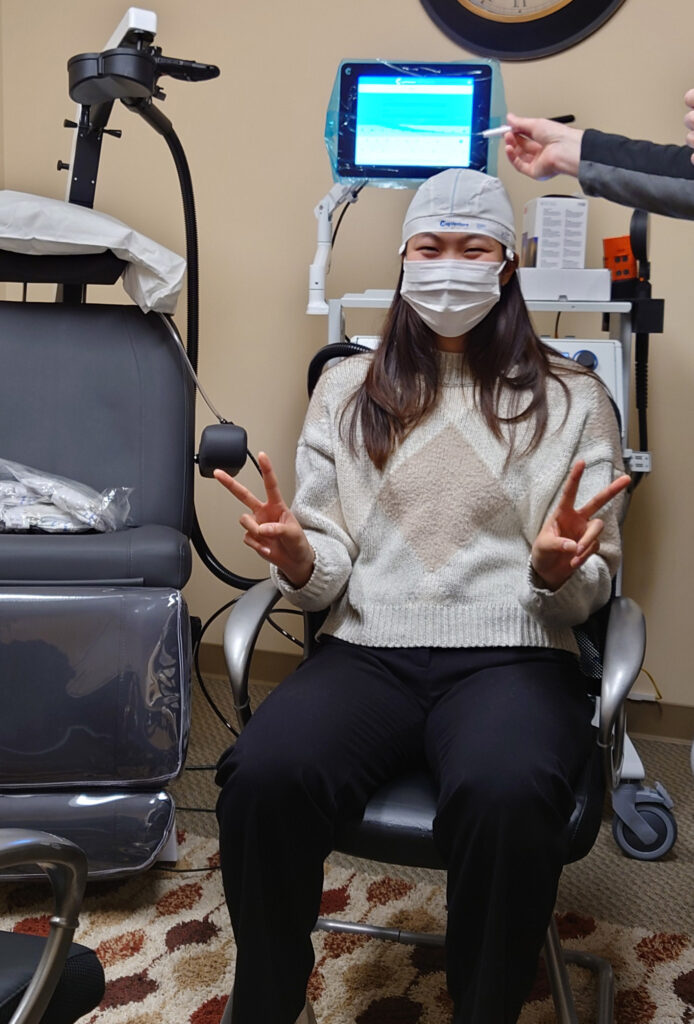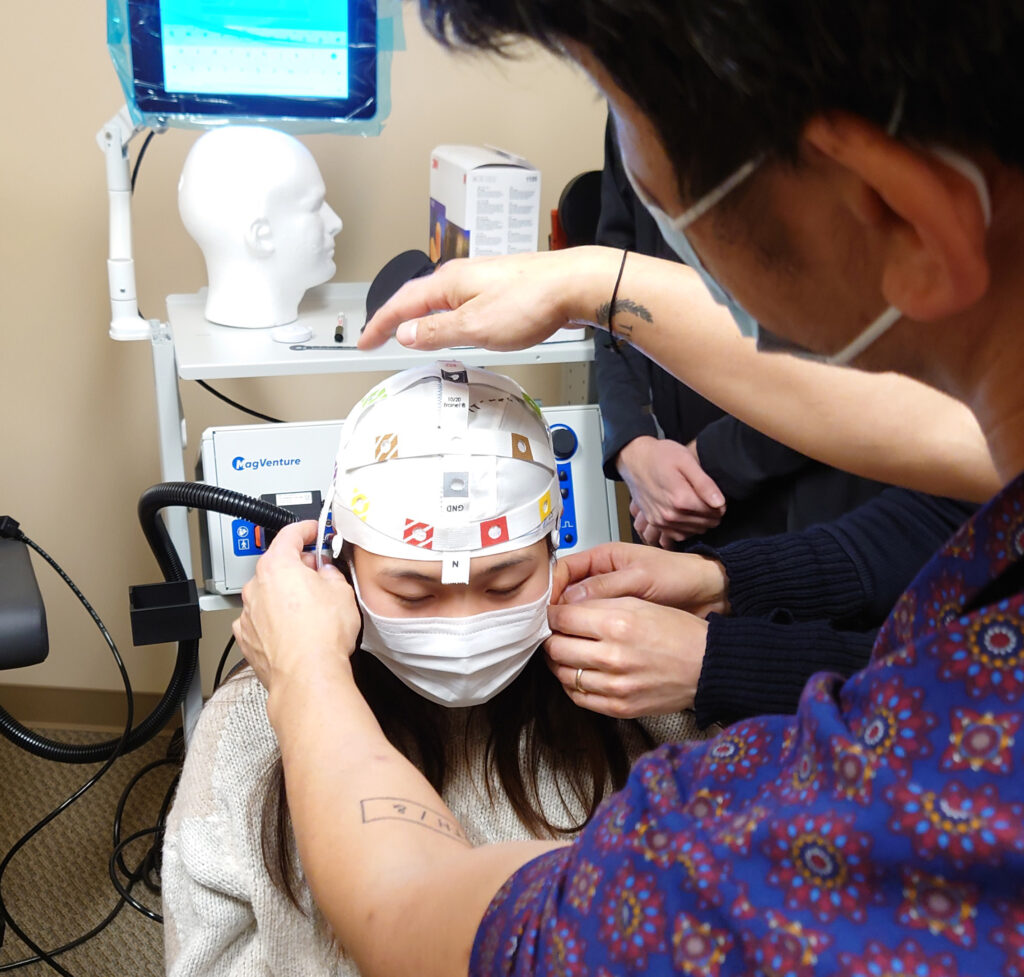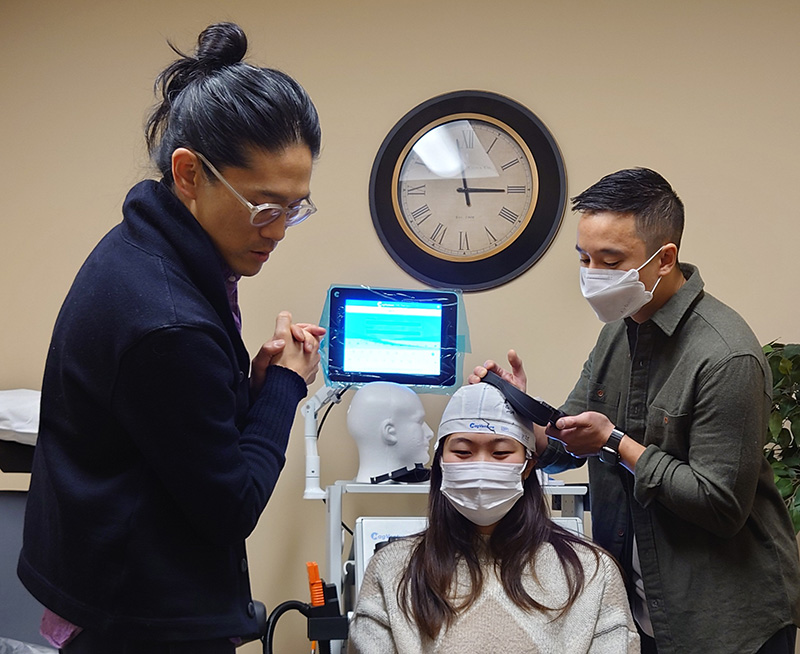Psychiatry | Psychotherapy | Psychological Assessment | Sleep Program | Tele-Behavioral Health | TMS Therapy | Addiction Treatment
Overview
While depression and related conditions like anxiety, PTSD, and OCD are treatable, the treatments are often undesirable.
Medications often come with negative side effects, such as weight gain, low libido, headaches, fatigue, dry mouth, and constipation; and it can take a lot of trial and error to find one that works. Plus, treatments like electro-convulsive therapy (ECT) often have adverse effects.
TMS is a natural alternative that has proven results and very minimal side effects.


What is Transcranial Magnetic Stimulation?
Transcranial Magnetic Stimulation (TMS) is a relatively new natural treatment for depression that has numerous clinical studies to back it up. It has even been shown to resolve depression in individuals who have otherwise not responded to medications and therapy.
During TMS therapy, targeted magnetic pulses are sent to the prefrontal cortex, the part of the brain that regulates mood. This increases blood flow and the production of feel good neurotransmitters.
TMS also increases Brain Derived Nerve Growth Factors (BDNF), increasing neuroplasticity in the brain, which results in a greater ability to learn and form new habits.
Studies have demonstrated the following additional benefits, although more studies are needed to conclude these findings:
- Anxiety relief
- Chronic pain relief
- Eases nicotene abuse
- Assists with cocaine abuse
- Reduces ADHD symptoms
- Assists with Autism symptoms
How Transcranial Magnetic Stimulation Works
During a TMS treatment, a figure 8-shaped magnet is placed on a specific area of the brain that commonly lacks blood flow and neurotransmitter activity (the Dorsolateral Prefrontal Cortex).
The magnet is turned on and off quickly, which acts as a pulsing of energy, activating the brain neurons like electric circuits. Doing so increases blood flow and neurotransmitter production, which is believed to alleviate depression symptoms.

Why Choose TMS Therapy?
TMS therapy has so many benefits and our patients love this natural approach. Here are some of the biggest reasons to choose this type of treatment…
Minimal Side Effects
Thousands of clinical trials have shown that the main side effect experienced is mild to moderate discomfort of the scalp. Less often, patients experience some tingling at the treatment site, lightheadedness, temporary face twitches, and low-level, temporary headaches.
Severe side effects are very rare and any side effects that do come up tend to disappear within one day. Rare side effects have been reported in some cases, such as hearing damage for people who fail to protect their ears during treatments, mania in bipolar patients, and seizures.
Long Lasting Results
The effects of TMS treatments are long-lasting and after your round of sessions are complete, you most likely won’t need to do anything more, unlike prescription medications that must be taken regularly.
In fact, a 2014 study demonstrated a 72.4% remission of depression as a result of TMS therapy with no reported serious adverse events. And 80% of patients maintained that remission over an evaluation of one year.
Safe & Non-Invasive
TMS therapy is a safe and non-invasive treatment.
- FDA cleared
- Covered by most insurance plans for depression
- Can be used with or without other treatments
- No anesthesia
- No sedation
- Nothing enters the bloodstream during treatment
- Can resume normal activities right after treatment
What Results Can I Expect From TMS Therapy?
Studies reveal that about 67% of patients respond positively to transcranial magnetic stimulation treatment and as many as 46% have a complete remission of depression symptoms as a result of TMS therapy.
It is common to notice a positive difference in how you feel after just a few treatments. Some patients experience ups and downs in their mood as they go through their series of treatments. This is a common healing response that happens within almost all modalities, and it’s the primary reason why people tend to think a treatment isn’t working.
Improvements in how patients feel often include:
- Better mood
- Enjoying hobbies and relationships again
- Better sleep
- More energy
- Better eating habits
- More patience
- Greater sense of humor
- Improved self-care
- Better coping skills

What to Expect During TMS Therapy
During your TMS therapy sessions, you’ll simply sit back in a reclined chair and relax. You’ll experience a slight tapping sensation where the magnet is applied to your head, which isn’t harmful or uncomfortable.
How Many TMS Treatments Are Needed?
TMS treatments last about 30 minutes, and participants will typically need to commit to getting treatments 5 days a week for 6-9 weeks.
This investment in yourself is well worth it based on the results you can enjoy. Patients are encouraged to treat their sessions as a form of self-care. It’s your time to relax and take some time for yourself.
Over the course of your transcranial magnetic stimulation treatment, symptoms of depression will likely subside as healthy brain function returns.
Who Is TMS Therapy Not Right For?
Due to the strong magnetic fields associated with TMS, we do not recommend TMS treatments for people who have metal devices or implants, such as:
- Stents
- Magnetic implants
- Aneurysm coils/clips
- Brain activity electrodes
- Implanted vagus nerve or deep brain stimulators
- Cochlear hearing implants
- Implanted stimulators or electrical devices
- Bullet fragments
Getting started with TMS
Steps to getting started
Schedule your 30 minute evaluation (Having a list of previously tried medications will be helpful)
Fill out the appropriate paperwork
Submit your information to insurance for prior authorization (only for insurance patients) – (Our office takes care of this once you submit your paperwork)
6 Weeks of Daily Treatment

Ready to Take Control of Your Life With TMS Therapy?
We offer TMS services at our Laguna Hills and Fullerton locations.


